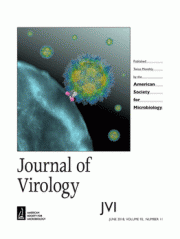Posted on June 15, 2016
Source: Journal of Virology

Quantitation of Productively Infected Monocytes and Macrophages of Simian Immunodeficiency Virus-Infected Macaques
Claudia R. Avalos, Sarah L. Price, Ellen R. Forsyth, Julia N. Pin, Erin N. Shirk, Brandon T. Bullock, Suzanne E. Queen, Ming Li, Dane Gellerup, Shelby L. O'Connor, M. Christine Zink,b, Joseph L. Mankowski,b,c, Lucio Gama and Janice E. Clements
Despite the success of combined antiretroviral therapy (ART), human immunodeficiency virus (HIV) infection remains a lifelong infection because of latent viral reservoirs in infected patients. The contribution of CD4+ T cells to infection and disease progression has been extensively studied. However, during early HIV infection, macrophages in brain and other tissues are infected and contribute to tissue-specific diseases, such as encephalitis and dementia in brain and pneumonia in lung. The extent of infection of monocytes and macrophages has not been rigorously assessed with assays comparable to those used to study infection of CD4+ T cells and to evaluate the number of CD4+ T cells that harbor infectious viral genomes. To assess the contribution of productively infected monocytes and macrophages to HIV- and simian immunodeficiency virus (SIV)-infected cells in vivo, we developed a quantitative virus outgrowth assay (QVOA) based on similar assays used to quantitate CD4+ T cell latent reservoirs in HIV- and SIV-infected individuals in whom the infection is suppressed by ART. Myeloid cells expressing CD11b were serially diluted and cocultured with susceptible cells to amplify virus. T cell receptor β RNA was measured as a control to assess the potential contribution of CD4+ T cells in the assay. Virus production in the supernatant was quantitated by quantitative reverse transcription-PCR. Productively infected myeloid cells were detected in blood, bronchoalveolar lavage fluid, lungs, spleen, and brain, demonstrating that these cells persist throughout SIV infection and have the potential to contribute to the viral reservoir during ART.